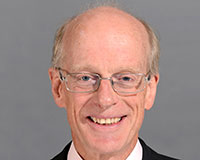 After 28 years of studying the property lending market, where do I think we will be in 2021? It feels a long way off, and a lot can happen in the meantime, but it’s best to take a long-term view.
After 28 years of studying the property lending market, where do I think we will be in 2021? It feels a long way off, and a lot can happen in the meantime, but it’s best to take a long-term view.
Looking at long-term economic cycles, I am a follower of Nikolai Kondratiev, who in 1925 wrote a pamphlet called Major Economic Cycles. He suggested 50-year long-term cycles (that’s 50 years between peaks) and postulated that each cycle is triggered by a technological revolution. Starting in 1800, he had considered the revolutions triggered by the coming of the steam engine, railways, electricity and latterly the arrival of the motor car.
Extending this forward to the present, I would say that today we are going through a huge technological revolution triggered by information technology, the computer and its various derivatives. I have worked in an office for over 40 years, and for the first 20 years or so my observation is that computers did not bring any real productivity gains.
However, over the past 20 years they have brought huge gains and made the working environment more efficient, the speed of communication breathtaking and the financial world truly global. I believe the revolution we are going through is one that was started in 1995 and, in this fast moving world, rather than a 50-year cycle, we are in a 30-year upturn taking us through to 2025.
In terms of other cycles, I would point to the duration of the last two economic cycles, both of which were 15 years. In the mid-1970s following the oil crisis, the UK economy went into a downtown, which was followed by a 15-year upturn from 1974 to 1989. Then, in September 1992, after the UK left the European Exchange Rate Mechanism, this was followed by 15 years of non-stop economic growth through to 2007.
The bottom of the current economic cycle was in March 2009. Add 15 years and that takes us through to 2024. That neatly ties in with my suggested long-term Kondratiev cycle. Taken together, the suggestion is that, in terms of the economic cycle, all should be well between now and 2021.
If this is correct, then the question is why are so many people already worrying about the next downturn?
My answer to that is that while memories of a deep and painful downturn remain fresh in people’s minds there is a tendency to worry about when the next one is due. It is instructive to examine the slides from our 2001/02/03 Financing Property presentations, when we started to examine the “top 10 signs of overheating in the property lending market”.
In June 2003, we said: “The commercial property and property lending markets are all past their peaks, and in some cases the nadir is in sight.” That is extraordinary; we were calling the market four years too early.
In 2016, I can see parallels with 2001/02/03 insofar as we are worrying prematurely about the next downturn potentially four or five years too early. By this measure, in 2021 (five years’ time) we could well be towards the top of the cycle.
So, why am I not worrying about the soft-ening in all three markets (commercial, residential and property finance) that we are reporting on in this year’s presentations of Financing Property?
My answer is that historically there have always been blips along the way. For example, in October 1997 there was a blip caused by the Asian and Russian financial crises. In 2001, there was one caused by Enron, WorldCom and 9/11. Both were considered to be serious at the time. The current softening was arguably triggered last year by fears relating to Russia, oil pricing and China, and this has been accentuated by the EU referendum. The current softening could well be just another blip along the way.
The background that we have today in the developed economies is one where there is the extraordinary combination of zero cost of money, weak GDP growth and zero inflation. I cannot over emphasise what a unique set of circumstances this is. One would have expected a prolonged period of a 0.5% base rate to drive the UK economy upwards, particularly coupled with quantitative easing, but it hasn’t happened. I am not sure why, and I suspect any honest economist would admit to not having a clear reason either. This is unchartered territory with many unknowns.
William Newsom, senior director, Savills










